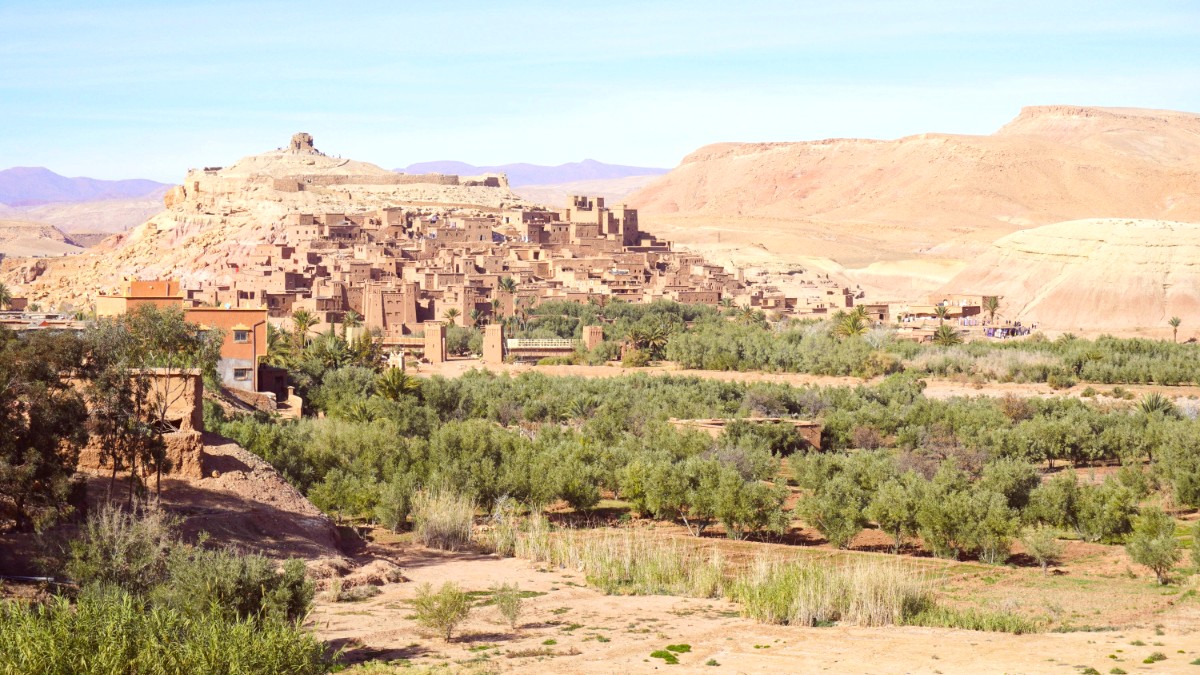
Morocco
Summer (June - August) daytime temperatures frequently exceed 40°C (104°F), often reaching 45°C (113°F) or higher. Nights offer some relief, cooling to around 20-25°C (68-77°F). Humidity stays very low. This period is the driest. The sun is intense, making midday outdoor activities challenging.
Autumn (September - November) temperatures cool to a comfortable range of 25-35°C (77-95°F) during the day. Nights become cooler, dropping to around 10-15°C (50-59°F). Rainfall stays minimal but slightly rises towards November. This period often brings clear skies and pleasant conditions. Spring (March - May) temperatures rise from 20°C (68°F) in March to 30-35°C (86-95°F) in May. Nights remain cool. Winter (December - February) daytime temperatures range from 15-20°C (59-68°F). Nights can be cold, dropping to 0-5°C (32-41°F), occasionally below freezing.
Summer temperatures are extremely high. Dehydration and heatstroke are concerns. Staying hydrated, wearing light clothing, seeking shade, and avoiding strenuous activity during midday heat are highly recommended.
Dust storms can occur, especially in spring and early summer, reducing visibility and comfort outdoors. Carrying a scarf or mask offers some protection. Flash floods, while rare, may occur in desert wadis (dry riverbeds) after heavy rainfall in surrounding mountains.
Optimal for Sahara expeditions.
October to April avoids extreme summer heat and winter's coldest nights.
Extreme summer months for comfortable overnight desert camp stays.
Ideal for kasbahs and film studios.
October to April for comfortable exploration.
May and September; plan visits for early mornings or late afternoons.
Best light conditions.
Clear skies and softer light during autumn and spring are ideal for photography.
Dust storms in spring/early summer can impact visibility for photography.
Daytime temperatures are pleasant, fitting for sightseeing and outdoor activities, including desert excursions. Skies are generally clear, and evenings offer comfort. This period yields agreeable weather for most visitors.
Temperatures are warmer but generally manageable, especially in May before peak summer heat and September as temperatures begin to drop. Fewer crowds than in high season exist, with potentially better deals on accommodation and a relaxed atmosphere.
High season sees larger tourist numbers at major attractions.
Accommodation and tour prices may be higher during peak demand; book ahead.
May can be quite hot, and September retains significant heat at midday.
Very few tourists, leading to lower prices for accommodation and tours.
Extreme heat makes daytime outdoor activities very hard for many.
Travelers typically find the process straightforward, but specific rules vary by nationality.
Morocco generally grants visa-free entry for tourism for up to 90 days to citizens of many countries, including the United States, Canada, the United Kingdom, Australia, New Zealand, and most European Union member states.
Certain documents are generally requested at immigration.
A careful review of all entry requirements and a check on the most current regulations ensure a smooth arrival.
Moroccan Dirhams (MAD) are the local currency; insight into exchange rates and local payment customs is useful.
The official currency is the Moroccan Dirham (MAD). Dirhams are a closed currency, meaning one cannot legally import or export them. Exchange your foreign currency upon arrival in Morocco.
ATMs are widely present in Ouarzazate for cash withdrawals. Major bank branches like Attijariwafa Bank and Banque Populaire line Avenue Mohammed V. Currency exchange offices also operate throughout the city. Credit cards (Visa, Mastercard) are accepted at larger hotels, restaurants, and shops. However, cash is needed for smaller purchases, souks (markets), petit taxis, and many local eateries. Always carry small denominations for ease.
Daily costs range from 300-500 MAD (approximately $30-50 USD).
Accommodation: 100-200 MAD (hostel dorm or basic guesthouse).
Meals: 100-150 MAD (street food, local eateries).
Daily costs fall between 500-1200 MAD (approximately $50-120 USD).
Accommodation: 300-600 MAD (mid-range hotel or comfortable riad).
Meals: 150-300 MAD (restaurants with wider menus).
Daily costs begin at 1200+ MAD (approximately $120+ USD).
Accommodation: 600-2000+ MAD (luxury hotel, upscale riad, resort).
Meals: 300-600+ MAD (fine dining, exclusive culinary experiences).
| Category | Budget (MAD) | Mid-Range (MAD) |
|---|---|---|
| Accommodation (per night double room) | 100-200 (bed/basic room) | 300-600 |
| Meals (per person) | 20-50 (street food) | 70-150 (main course) |
| Transportation (example) | 10-30 (Petit Taxi) | 100-150 (Bus to Marrakech) |